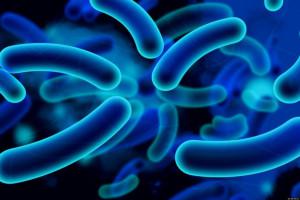
As an E. coli Lawyer or E. coli Attorney, we are asked frequently - What Are the Common Causes of an E. coli Outbreak?
Shiga toxin-producing E. coli O157:H7 is one of thousands of serotypes of Escherichia coli. E. coli O157:H7 bacteria and other pathogenic E. coli mostly live in the intestines of cattle, but E. coli bacteria have also been found in the intestines of chickens, deer, sheep, and pigs. A 2003 study on the prevalence of E. coli O157:H7 in livestock at 29 county and three large state agricultural fairs in the United States found that E. coli O157:H7 could be isolated from 13.8% of beef cattle, 5.9% of dairy cattle, 3.6% of pigs, 5.2% of sheep, and 2.8% of goats. Over 7% of pest fly pools also tested positive for E. coli O157:H7. Shiga toxin-producing E. coli does not make the animals that carry it ill. The animals are merely the reservoir for the bacteria.
E. coli O157:H7 was first recognized as a pathogen in 1982 during an investigation into an outbreak in Oregon and Michigan of hemorrhagic colitis associated with consumption of hamburgers from a fast-food chain restaurant (McDonald’s).
E. coli O157:H7 first became a household name during an outbreak in the western U.S. that began in late 1992 that lasted into 1993. The E. coli outbreak was linked to the consumption of hamburgers served by the Jack in the Box Restaurant chain. Cases were reported from Washington (602 cases/144 hospitalizations/3 deaths), Idaho (14 cases/4 hospitalizations/no deaths), California (34 cases/14 hospitalizations/1 death), and Nevada (58 cases/9 hospitalizations/no deaths). The investigation into the Jack in the Box E. coli outbreak revealed that restaurant outlets were serving contaminated beef and were not cooking the hamburgers thoroughly. Seventy-three Jack in the Box restaurants were ultimately identified as part of the outbreak and recall. A trace-back was conducted, and five slaughter plants in the United States and one in Canada were identified as the likely sources of beef used by Von Corporation in the production of the hamburger patties sold to Jack in the Box. No one slaughter plant or farm was ever identified as the source of the beef.
Although foods of a bovine origin are the most common cause of both outbreaks and sporadic cases of E. coli O157:H7 infections, outbreaks of illnesses have been linked to a wide variety of food items. For example, produce (specifically sprouts and romaine lettuce) has been the source of substantial numbers of outbreak-related E. coli O157:H7 infections since at least 1991, and now has passed ground beef as the most common vector of infection.
E. coli O157:H7 outbreaks have been linked to red meat (specifically ground beef), alfalfa, clover and radish sprouts, lettuce, and spinach. Other vehicles for outbreaks include unpasteurized juices, yogurt, dried salami, mayonnaise, raw milk, game meats, hazelnuts, and raw cookie dough (likely dried flour).
Because the illnesses caused by the ingestion of E. coli bacteria range from mild to severe, the real-life impacts of E. coli infection vary from person to person.
While anyone can become ill with an E. coli infection, very young children, the elderly, and persons with compromised immune systems are most likely to develop severe illness and hemolytic uremic syndrome (HUS). Best estimates indicate that between 5 and 10% of people diagnosed with E. coli infection develop HUS.
Most E. coli patients with HUS recover within a few weeks, but the real-life impacts of E. coli infection and HUS can be devastating. Some HUS patients, even healthy older children, young and mature adults, suffer permanent organ damage or die.